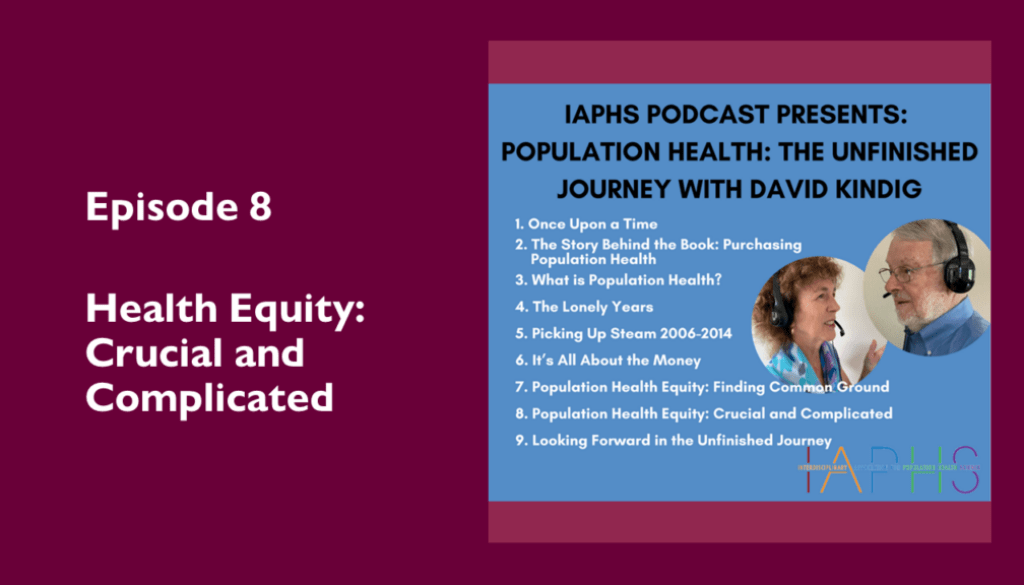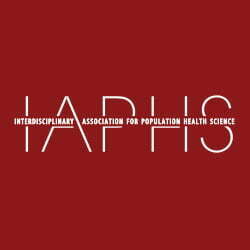Population Health – The Unfinished Journey with David Kindig: Episode 8, “Health Equity: Crucial and Complicated”
IAPHS StaffIn nine podcasts, David Kindig MD, PhD, a population health thought leader, is interviewed by Sanne Magnan MD, PhD about Kindig’s 50-year population health scholarly and policy journey, including many stories, anecdotes, and takeaways.
In our corresponding blog posts, we highlight some of the key moments and takeaways as a reminder for you to tune into previous and future podcasts. You can listen to Episode 1, “Once Upon a Time;” Episode 2, “The Story Behind the Book ‘Purchasing Population Health;’” Episode 3, “What Is Population Health?”; Episode 4, “The Lonely Years;” Episode 5, “Picking Up Steam;” Episode 6, “It’s All About the Money”; and Episode 7, “Health Equity: Finding Common Ground.”
Overview
In this episode, Kindig explains why health equity is a complicated concept to explain, especially given Isenberg’s ideas about poor white classism and Haidt’s research about how liberals and conservatives view “fairness” differently. He urges us to consider race but also other differences that create inequity, such as socioeconomic and educational variances.
“Raise the mean, close the gaps” is a concise way to understand equity’s two goals—but remember, Kindig says, that either goal alone is not enough, and unfortunately, the gaps can be reduced by lowering the best instead of improving the worst.
To help people understand these ideas, Kindig and colleagues developed the Population Health Performance Index tool, which lets you vary the relative importance of the two components and see the impact on overall performance. Unfortunately, this tool isn’t as widely used as Kindig had hoped.
Kindig and Sanne then discuss why power may be the most fundamental cause of both health and equity. Agency—both collective and individual—can be a “leading cause of life” (see Gary Gunderson’s work.)
Finally, Kindig encourages people to think of any health equity framework not as flat, but instead as multilayered. And of course, he encourages scientists to never stop translating research into practice.
Highlights
- Health equity IS complicated, and it has many interacting parts that go beyond the simple idea of equal health outcomes.
- Additional dimensions like history and power need to be brought forward for a full understanding.
- Communicating complex and sometimes contrarian concepts in politically challenging times requires skills beyond traditional research and reporting.
References
- Asada Y, Whipp A, Kindig D, et al. 2014. Inequalities in multiple health outcomes by education, sex, and race in 93 US counties: Why we should measure them all. International Journal for Equity in Health 13: 47.
- Kindig D, Lardinois N, Chatterjee D. 2016. Can states simultaneously improve health outcomes and reduce health outcome disparities? Preventing Chronic Disease 13: 160126.
- Kindig D, Lardinois N, Asada Y, Mullahy J. 2018. Considering mean and inequality health outcomes together: the population health performance index. International Journal for Equity in Health 17(1): 25.
- Givens ML, Kindig D, Inzeo PT, Faust V. Power: the most fundamental cause of health inequity. Health Affairs Blog, February 1, 2018.





All comments will be reviewed and posted if substantive and of general interest to IAPHS readers.